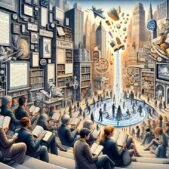The Art of Storytelling: Vehicles in Fiction
For centuries, vehicles have played an essential role in storytelling. From horse-drawn carriages to modern automobiles, they have been pivotal in moving narratives forward, building character dynamics, and evoking emotions in readers. Whether it’s a simple road trip or an epic journey, vehicles often act as the foundation for a story’s development. In this article, we will explore the art of storytelling through vehicles in fiction, examining their significance and impact on literature across different time periods and genres.
The Evolution of Vehicles in Literature
Vehicles have evolved alongside society, and their presence in literature has changed accordingly. From the horse and carriage era, where mobility was limited, to the modern age, where technology has enabled faster and more efficient transportation, authors have adapted their stories to incorporate vehicles as essential elements. Early literature often featured horse-drawn carriages, which were symbols of wealth, power, and social status. However, the arrival of automobiles transformed the way stories were told, giving characters more freedom to traverse vast distances and interact with a wider range of people and settings.
Symbolism and Metaphors: Cars as Literary Devices
Throughout literary history, authors have used vehicles as symbolic and metaphorical devices to convey deeper meanings and themes. Cars, in particular, can symbolize freedom, escape, or the pursuit of dreams. They can also serve as metaphors for personal growth, change, or the passage of time. For example, a broken-down car might represent a character’s emotional turmoil or stalled progress in life. By incorporating vehicles in their narratives, authors can create multi-layered stories that resonate with readers on a deeper level.

Memorable Cars and Characters in Fiction
Some of the most iconic cars in fiction have become synonymous with their characters, highlighting the importance of vehicles in storytelling. From Jay Gatsby’s luxurious yellow Rolls-Royce to the rugged, post-apocalyptic vehicles of Mad Max, cars often serve as extensions of a character’s personality, status, or desires. They can also act as a means for characters to bond, such as the camaraderie formed by the road trip undertaken in Jack Kerouac’s “On the Road.” Even in modern literature, vehicles continue to play a significant role in shaping memorable characters and their journeys.
The Impact of Vehicles on Modern Literature
In contemporary literature, vehicles are often used as a means to explore current societal issues or technological advancements. Stories might delve into the implications of self-driving cars or explore the human impact on the environment through the lens of transportation. For example, authors might include a best tuner for 5.3 Silverado as a way to address the growing interest in car performance and customization. As technology continues to develop, vehicles in fiction will undoubtedly evolve, providing new avenues for authors to explore themes and create compelling narratives.
Vehicles as Cultural and Historical Markers
Another fascinating aspect of vehicles in fiction is their ability to serve as cultural and historical markers, providing readers with a window into the zeitgeist of a particular time and place. The cars featured in a story often reflect the values, aesthetics, and technological advancements of their era, allowing readers to gain insight into the context in which the narrative unfolds. For instance, the prominence of American muscle cars in the 1960s and 1970s literature and film speaks to the era’s fascination with power and speed. Similarly, the emergence of electric and hybrid vehicles in contemporary fiction mirrors the growing global concern for sustainability and environmental responsibility. As vehicles continue to evolve, they will remain invaluable not only for their narrative contributions but also as indicators of the cultural and historical backdrop against which stories are set.
Conclusion
Vehicles have proven to be indispensable elements of storytelling, offering authors a versatile tool for exploring themes, character development, and human experiences. The presence of vehicles in literature not only impacts narratives but also provides insights into the cultural and historical context of a story. As society and technology advance, the role of vehicles in fiction will continue to transform, presenting new opportunities for authors to create engaging, thought-provoking narratives that reflect the values and concerns of their time.
By understanding the significance of vehicles in literature, we can further appreciate the complexities of storytelling and the ways in which authors weave intricate, resonant tales that captivate readers and leave lasting impressions. From serving as symbols and metaphors to acting as markers of cultural and historical context, vehicles remain a vital component in the stories that shape our imaginations, perspectives, and understanding of the world around us.


